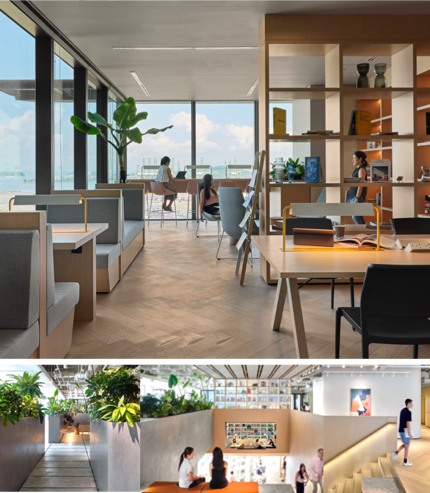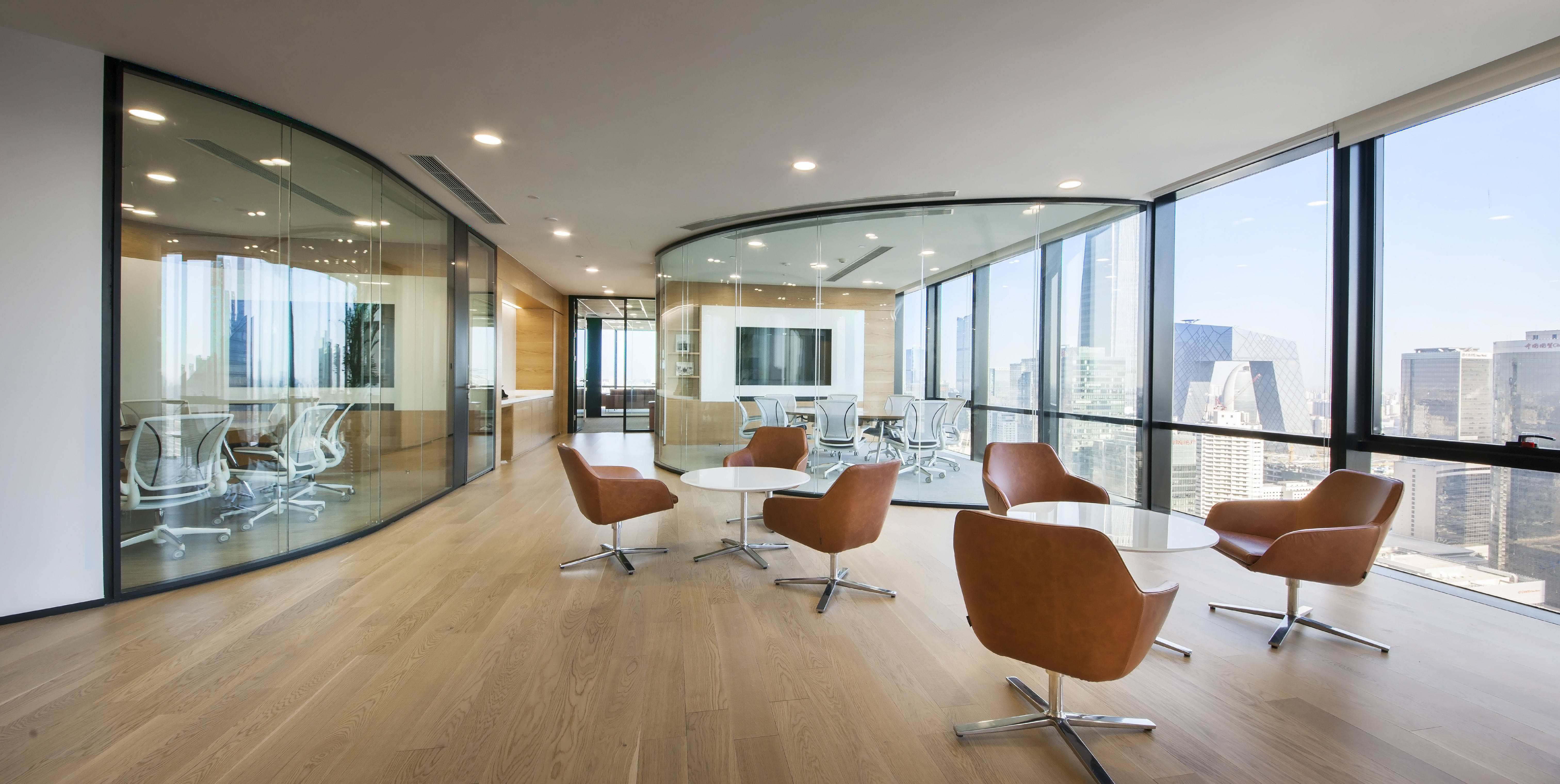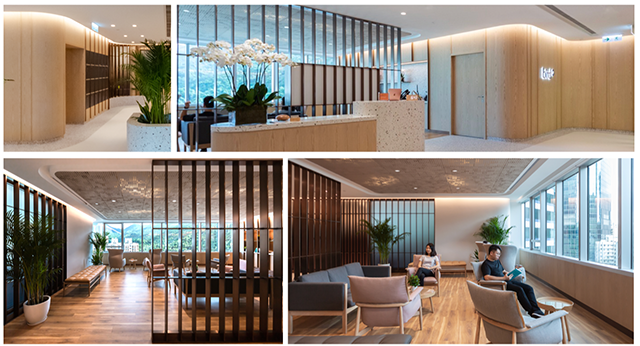Home > Case Studies > A look at the intangible benefits of designing with wood for human health, mental well-being and planetary stewardship
A LOOK AT THE INTANGIBLE BENEFITS OF DESIGNING WITH WOOD FOR HUMAN HEALTH, MENTAL WELL-BEING AND PLANETARY STEWARDSHIP
“Let’s begin with a look at the tangible and the intangible aspects of wood and biophilia in architectural design. The tangible being what we can touch and what our senses can confirm consciously, but there is so much more going on that is intangible, so much we are experiencing subconsciously and energetically that completely augments who we are and how we feel”
Tangible and intangible
As humans, our relationship with wood goes back to our earliest shelters and the forest itself. While construction techniques and material science continue to evolve, wood remains integral. Timelessly, architecture combines tangible and intangible elements to create spaces resonant with human needs and aspirations.
The ‘tangibles’ include materials themselves, which define and structurally support our spaces, inside and out. Every integrated element plays a vital role in the construction, resilience, and architectural experience of our built environments.
The ‘intangibles’ include elements understood in wavelengths, energy, and perception – light, sound, movement, sequence, tactility – as well as through our complex subtle senses, physical and mental receptors.
It is precisely these incredible intangibles which inspire, heal and provide timeless impact. As an architect, when specifying wood, our goal is to both embrace the duality of tangibility and to reach beyond and recognize that wood works at many levels in our perception – conscious and unconscious.
Effortless health
Conscious recognition includes the appreciation of wood as a natural material, a soft and warm quality in contrast to the glass, metal, ceramic and other man-made surfaces that define our built environments. Natural wood is particularly effective when used where people can touch and connect with it directly and can experientially be grounded through memory, sensory awareness and integrity. Our minds, fascinated by natural patterns, effortlessly enjoy the colors and visible idiosyncrasies. This cognitive dance is welcome, and research shows that it can effectively de-stress and reduce activity in our sympathetic nervous system (SNS). Additional research shows that this visual play, which occurs when looking at wood and other biophilia, effectively increases our focussed-task attention span, which can have great outcomes for creating beautiful, high-performance workplaces and educational environments.
Research shows an innate affinity for wood is shared by people around the globe. From the phytoncides that are released from trees in the forest, to inherent scents, patterns and the ability to regulate humidity and improve IAQ. The regenerative effect of wood and trees, and their positive impact on human health and the nervous system is extensive. Benefits can: improve mood; boost immunity; lower blood pressure; accelerate recovery; improve sleep quality; support concentration; stimulate creativity and support immune health.
De-stressing physiological impact
Understanding the way that wood intangibly affects our subconscious and physiology, leads beyond the visual and tactile, to considerations of sound and smell. With respect to auditory impact, the psychoacoustic properties of natural biophilic design are integral in modulating reverberation, comfort, tone and enhancing a sense of safety. Our bodies respond to subtle differences. With respect to scent, research shows that the olfactory impact from various types of trees can enhance psychological relaxation and decrease sympathetic nervous system (SNS) activities, thereby helping to reduce human stress levels. More specifically, after proximity with wood and trees, studies measure decreases in human adrenaline concentrations, with increases in desirable NK cell and large granular Lymphocytes (LGL) – which help the body fight disease. In sum, the presence of biophilic elements strengthens one’s overall immune system, which is our ultimate resiliency to maintain long-term physical and mental well-being.
These intangible, de-stressing impacts of timber are critical because when our SNS is activated, our bodies go into a fight or flight response and our internal cellular repair halts. While this instantaneous transition serves us well in times of peril, it is intended for short bursts followed by long periods of recovery where the parasympathetic nervous system can lead and re-engage the healing processes. In contemporary life, employee stress levels have been measured to have risen 20% in three decades. Avibrats architects, we are called to design spaces which through their sequence, versatility and specification help to destress and support human well-being and success.
Transforming workplace environments into healing spaces at three scales
Considering the vast number of wood types, our focus in this article is centered on a single species: the mighty Oak tree, a US hardwood with a light, warm hue. Its integration has been instrumental in helping us transform workplace environments into healing spaces for our clients and their people, the result of which greatly impacts their physical and mental well-being.
To see how these insights on the impact of wood in design are implemented, we highlight three case studies of different scales and functions. In each we are honored to work with the light grain of oak wood and its properties to create bespoke, healing, rejuvenating, high-performance environments. All three have fostered extremely positive results based on user surveys, interviews and impact responses.
1. Zendesk | Singapore (50,000 sq.ft.)
With a commitment to protect both human and environmental health, Zendesk engaged M Moser to deliver a holistic design for their new APAC headquarters integrating sustainability and wellness best practices.
The majority of this vibrant workplace revolves around natural wood floors and furniture, pairing perfectly with the internal biophilic jungle we developed throughout the office, offering staff a variety of delightful and natural collaborative environments to work from.
One highlight of this two-level design includes an interconnecting, multi-functional wooden stair area which serves as seating for large town hall gatherings or an alternative area for casual conversations. The wood material integrated within the stair helps to welcome, attract and transform the space with respect to acoustic and sensory experience. It is additionally a linkage pathway encouraging physical movement and a well ventilated are to work, relax or socialize.
Throughout the Zendesk workplace, people are empowered to find places where they can focus, collaborate be inspired and excel. The textures and warmth of the oak wood throughout lends depth, peace and natural beauty to the workplace experience.
2. Yale Center | Beijing (10,600 sq.ft.)
Yale University’s first facility in China embodies a sustainable design enhanced by virtue of recycled oak floors used throughout the space to create a soothing human experience. The overall transparent and minimalist design of the space is imbued with warm wood to create a welcoming journey that accentuates the impact of this new, integrated high-tech learning environment. The natural wood patterns and hues ground the open, curved glass, soften acoustics and balancing sky views and create a harmonious learning and working environment.
3. Bird Meditation | Hong Kong (4,300 sq.ft.)
Designing a healing space for rejuvenation in one of Hong Kong’s busiest districts, our work with Bird Meditation puts mental and physical wellbeing at the heart of the user journey by integrating well-considered materials, acoustics, and illumination. The use of soft curves, glare-free lighting, and integral natural patterns creates a comfortable, soothing environment, enabling visitors to de-stress the moment they enter the studio.
It is in fact the layering of wood textures and hues which inherently supports the peace and harmonious experience within the space. The softly curved corners gently guide one into to the space where one pause and breathe deeply, inhaling the scent and energy of the space. Once warmly greeted and digital devices stowed, one can pause again, sit, remove shoes and place them in a wooden storage area. From there, still surrounded by wood, screens and translucencies, one can move from open areas to enclosed meditation spaces of differing scales, illumination and design.
A shared casual lounge with expansive views, fresh fruit and purified water welcomes all guests. The space integrates wooden furniture, large-leaf biophilic design and ample daylight to augment the oak hues and add a serene vibrance to the environment.
Our clients are increasingly recognizing the importance of choosing recycled, natural materials such as wood to create beautiful spaces that both align with company values of taking care of their people’s well-being and contribute to the protection of our environment. As practitioners, we continue to use our own offices around the globe as living labs and there are many additional case studies we can share around the globe and using alternative wood species to create healing, high performance spaces.
Stewardship
At this unusual time when we are challenged on multiple fronts – keeping our loved ones, colleagues and global community healthy and free from virus microbes; supporting inclusion and diversity among all; and taking action to reverse climate change through conscious stewardship – we get to begin with the strengthening of a healthy, de-stressed mind and body. We know that the environment can have a greater effect on our physical health and mental well-being than our genetics, doctors, diets or fitness regimes, so as architects we get to work together with all who design and deliver the built environment to ensure we promote and prioritize physical and mental health. The careful and considered use of wood in design can clearly augment human health and mental peace.
Beyond aesthetics and health, wood’s ability to transform sunlight into energy while capturing and storing carbon transforms our built environments and the organizations that inhabit them into environmental stewards, inherited directly from the beauty of forests which we reflect into our carefully crafted designs for the benefit of people and the planet.



